-
 Bitcoin
Bitcoin $104,611.3693
0.00% -
 Ethereum
Ethereum $2,507.5507
-1.23% -
 Tether USDt
Tether USDt $1.0004
0.00% -
 XRP
XRP $2.1465
-1.24% -
 BNB
BNB $652.2983
-0.99% -
 Solana
Solana $153.2045
-1.58% -
 USDC
USDC $0.9999
0.00% -
 Dogecoin
Dogecoin $0.1912
-0.87% -
 TRON
TRON $0.2681
0.35% -
 Cardano
Cardano $0.6708
-1.51% -
 Sui
Sui $3.2820
0.93% -
 Hyperliquid
Hyperliquid $32.0226
-2.06% -
 Chainlink
Chainlink $13.8956
-0.21% -
 Avalanche
Avalanche $20.6232
-0.40% -
 Stellar
Stellar $0.2649
-0.66% -
 UNUS SED LEO
UNUS SED LEO $8.6737
0.54% -
 Bitcoin Cash
Bitcoin Cash $401.2705
-3.49% -
 Toncoin
Toncoin $3.1215
0.76% -
 Shiba Inu
Shiba Inu $0.0...01291
2.04% -
 Hedera
Hedera $0.1668
0.12% -
 Litecoin
Litecoin $87.4061
0.32% -
 Polkadot
Polkadot $4.0409
-1.20% -
 Monero
Monero $326.9574
0.12% -
 Bitget Token
Bitget Token $4.7211
-1.11% -
 Ethena USDe
Ethena USDe $1.0011
0.00% -
 Dai
Dai $0.9999
0.00% -
 Pepe
Pepe $0.0...01163
0.18% -
 Pi
Pi $0.6391
1.77% -
 Uniswap
Uniswap $6.1759
1.16% -
 Aave
Aave $246.8938
-0.97%
How to set the stochastic oscillator? What are the fast and slow line parameters?
The stochastic oscillator, ranging from 0 to 100, uses %K and %D lines to signal overbought (>80) and oversold (<20) conditions in crypto trading.
May 29, 2025 at 10:49 am
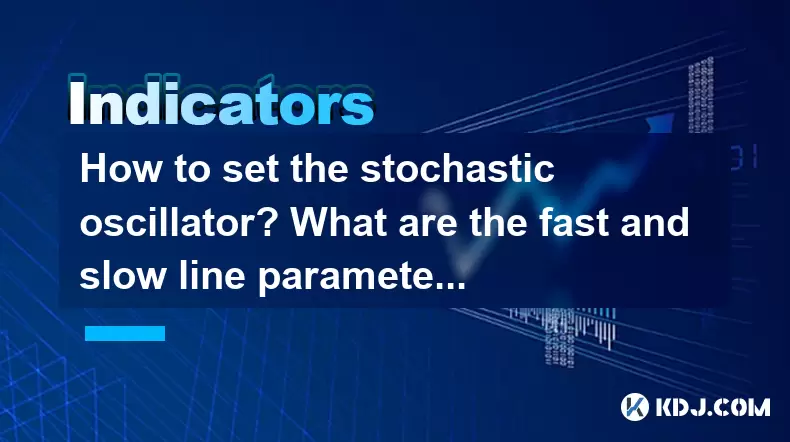
The stochastic oscillator is a popular momentum indicator used in the cryptocurrency trading world to predict price movements by comparing the closing price of a cryptocurrency to its price range over a certain period. Understanding how to set up and interpret the stochastic oscillator is crucial for traders looking to make informed decisions. In this article, we will delve into the process of setting up the stochastic oscillator, discuss the parameters of the fast and slow lines, and explore how these settings can be optimized for cryptocurrency trading.
Understanding the Stochastic Oscillator
The stochastic oscillator is based on the premise that in an uptrend, prices tend to close near the high, and in a downtrend, prices tend to close near the low. The formula for the stochastic oscillator involves two lines: the %K line (fast line) and the %D line (slow line). These lines help traders identify potential overbought and oversold conditions in the market. The oscillator ranges between 0 and 100, with readings above 80 typically indicating overbought conditions and readings below 20 indicating oversold conditions.
Setting Up the Stochastic Oscillator
To set up the stochastic oscillator on your trading platform, follow these steps:
- Open your trading platform and navigate to the indicators section. This is usually found under a tab labeled "Indicators" or "Studies."
- Search for the stochastic oscillator. It may be listed as "Stochastic" or "Stochastic Oscillator."
- Click on the stochastic oscillator to add it to your chart. A settings window will appear, allowing you to customize the parameters.
- Adjust the parameters for the %K and %D lines. The default settings are often 14 for the %K period, 3 for the %D period, and 3 for the smoothing period. However, these can be adjusted based on your trading strategy.
- Confirm the settings and apply the oscillator to your chart. The stochastic oscillator will now appear on your chart, displaying the %K and %D lines.
Fast Line (%K) Parameters
The fast line, or %K, is the primary line of the stochastic oscillator. It measures the current price relative to the high-low range over a specified period. The default setting for the %K period is typically 14, which means the oscillator calculates the highest high and lowest low over the last 14 periods.
- A shorter %K period (e.g., 5 or 10) will make the oscillator more sensitive to price changes, potentially leading to more frequent buy and sell signals.
- A longer %K period (e.g., 20 or 25) will smooth out the oscillator, reducing the frequency of signals but potentially increasing their reliability.
Slow Line (%D) Parameters
The slow line, or %D, is a moving average of the %K line, typically calculated over three periods. The %D line helps to smooth out the fluctuations of the %K line, providing a more reliable signal for traders. The default setting for the %D period is usually 3, but this can be adjusted to suit different trading strategies.
- A shorter %D period (e.g., 1 or 2) will make the %D line more responsive to changes in the %K line, potentially leading to more trading signals.
- A longer %D period (e.g., 5 or 7) will smooth out the %D line, reducing the frequency of signals but potentially increasing their accuracy.
Optimizing Stochastic Oscillator Settings for Cryptocurrency Trading
Cryptocurrency markets are known for their volatility, which can affect the effectiveness of technical indicators like the stochastic oscillator. To optimize the stochastic oscillator for cryptocurrency trading, consider the following adjustments:
- Short-term trading: For traders focusing on short-term price movements, consider using a shorter %K period (e.g., 5 or 10) and a shorter %D period (e.g., 1 or 2). This setup will make the oscillator more sensitive to price changes, allowing for quicker entry and exit points.
- Long-term trading: For traders with a longer-term perspective, a longer %K period (e.g., 20 or 25) and a longer %D period (e.g., 5 or 7) may be more suitable. This setup will smooth out the oscillator, reducing false signals and providing more reliable trading opportunities.
- Volatility adjustments: During periods of high volatility, consider adjusting the %K period to a shorter timeframe to capture rapid price movements. Conversely, during periods of low volatility, a longer %K period may be more effective in filtering out noise.
Interpreting the Stochastic Oscillator
Understanding how to interpret the stochastic oscillator is essential for making informed trading decisions. Here are some key points to consider:
- Overbought and oversold conditions: When the oscillator rises above 80, it indicates that the cryptocurrency may be overbought, suggesting a potential price correction. Conversely, when the oscillator falls below 20, it suggests that the cryptocurrency may be oversold, indicating a potential price rebound.
- Crossovers: A bullish signal occurs when the %K line crosses above the %D line, especially when both lines are below 20. A bearish signal occurs when the %K line crosses below the %D line, particularly when both lines are above 80.
- Divergence: If the price of the cryptocurrency is making new highs while the stochastic oscillator is making lower highs, it may indicate a bearish divergence, suggesting a potential price reversal. Conversely, if the price is making new lows while the oscillator is making higher lows, it may indicate a bullish divergence, suggesting a potential upward reversal.
Frequently Asked Questions
Q: Can the stochastic oscillator be used alone for trading decisions?
A: While the stochastic oscillator is a powerful tool, it is generally recommended to use it in conjunction with other indicators and analysis methods. Relying solely on the stochastic oscillator may lead to false signals, especially in highly volatile markets like cryptocurrencies.
Q: How often should I adjust the stochastic oscillator settings?
A: The frequency of adjusting the stochastic oscillator settings depends on your trading strategy and the market conditions. For short-term traders, more frequent adjustments may be necessary to adapt to rapid price changes. Long-term traders may need to adjust settings less often, focusing on broader market trends.
Q: Is the stochastic oscillator more effective for certain types of cryptocurrencies?
A: The effectiveness of the stochastic oscillator can vary depending on the volatility and trading volume of the cryptocurrency. It may be more effective for cryptocurrencies with higher liquidity and trading volume, as these markets tend to have more reliable price movements and less noise.
Q: Can the stochastic oscillator be used for all timeframes?
A: Yes, the stochastic oscillator can be used across various timeframes, from short-term charts like 1-minute or 5-minute intervals to longer-term charts like daily or weekly intervals. The key is to adjust the %K and %D periods according to the timeframe to ensure the oscillator provides relevant signals.
Disclaimer:info@kdj.com
The information provided is not trading advice. kdj.com does not assume any responsibility for any investments made based on the information provided in this article. Cryptocurrencies are highly volatile and it is highly recommended that you invest with caution after thorough research!
If you believe that the content used on this website infringes your copyright, please contact us immediately (info@kdj.com) and we will delete it promptly.
- Ethereum (ETH) Expected to Outperform Solana (SOL) During the Upcoming Altcoin Season
- 2025-06-01 23:50:12
- Bitcoin Pepe Emerges as a Standout Contender in the 2025 Meme Coin Rally
- 2025-06-01 23:50:12
- Bitcoin Drops 3.62% to $102,666 After Moody's Downgrade
- 2025-06-01 23:45:13
- Coin Craze Jackpot and Midas: Hand of Fortune Expand Mancala Gaming's Portfolio
- 2025-06-01 23:45:13
- The Ultimate Guide to Understanding the Cryptocurrency Market
- 2025-06-01 23:40:13
- As Bitcoin Settles, Investors Are Turning Their Focus to Altcoins Showing Strong Potential for Growth
- 2025-06-01 23:40:13
Related knowledge
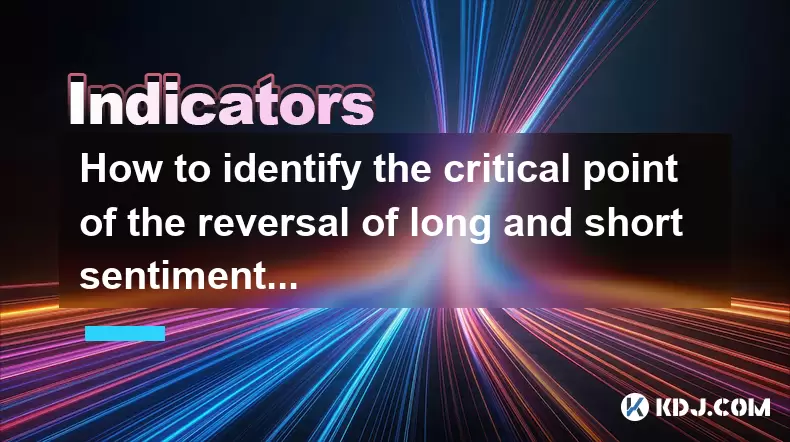
How to identify the critical point of the reversal of long and short sentiment through the K-line reverse package combination?
Jun 01,2025 at 03:36pm
In the world of cryptocurrency trading, understanding the sentiment of the market is crucial for making informed decisions. One effective method to gauge the potential reversal of long and short sentiment is through the analysis of K-line reverse package combinations. This technique involves studying specific patterns and formations within the K-line ch...
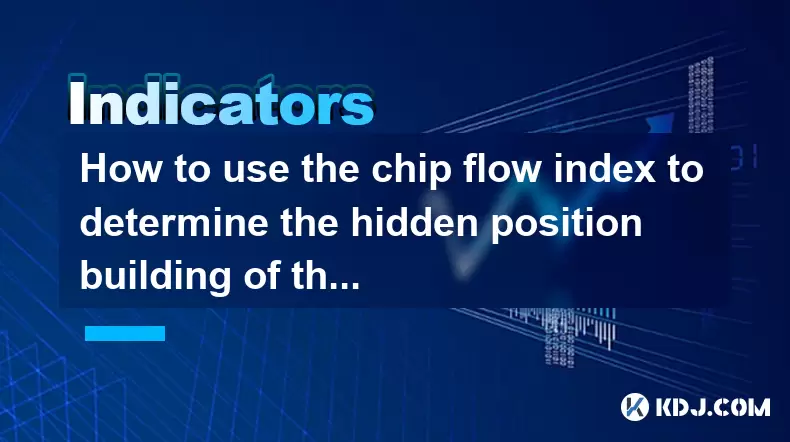
How to use the chip flow index to determine the hidden position building of the main funds?
Jun 01,2025 at 06:57pm
The Chip Flow Index (CFI), often referred to as the Volume Weighted Average Price (VWAP), is a crucial tool used by traders and investors to analyze the behavior of major funds in the cryptocurrency market. Understanding how to use the CFI can provide insights into the hidden position building of these main funds, which is essential for making informed ...
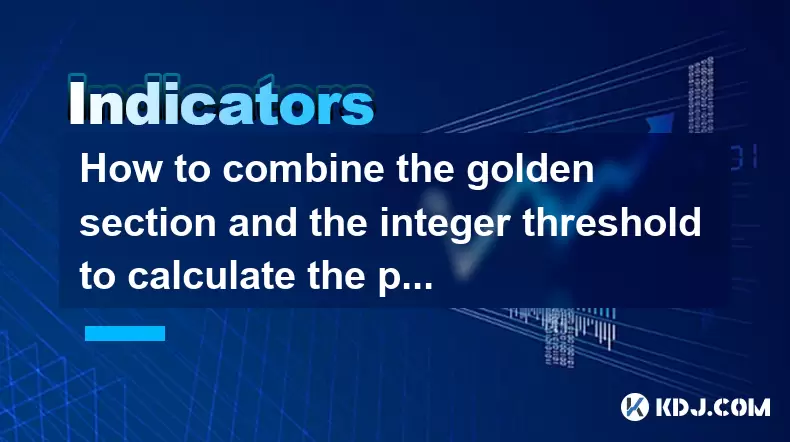
How to combine the golden section and the integer threshold to calculate the psychological target price?
May 31,2025 at 05:07pm
In the world of cryptocurrency trading, understanding and utilizing various technical analysis tools can significantly enhance your trading strategy. One such approach involves combining the golden section (also known as the Fibonacci retracement) with the integer threshold to calculate psychological target prices. This method can help traders identify ...
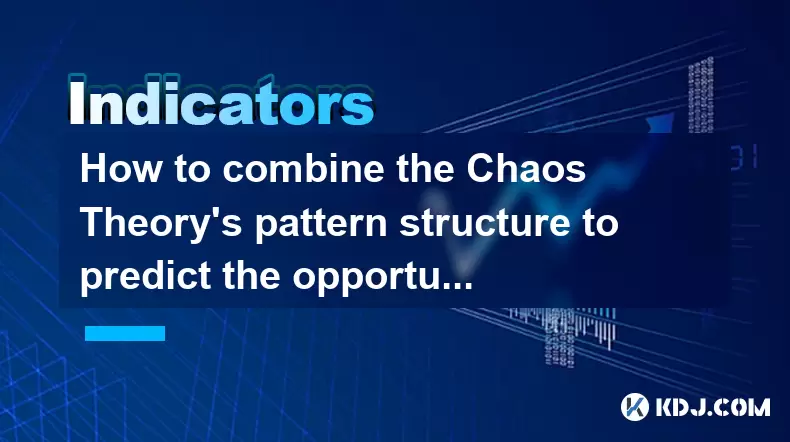
How to combine the Chaos Theory's pattern structure to predict the opportunity of small-level to large-level?
Jun 01,2025 at 07:56pm
The integration of Chaos Theory's pattern structure into the realm of cryptocurrency trading offers an intriguing approach to predicting market movements from small-level to large-level opportunities. Chaos Theory, traditionally applied in various scientific fields, suggests that within the apparent randomness of chaotic systems, there are underlying pa...
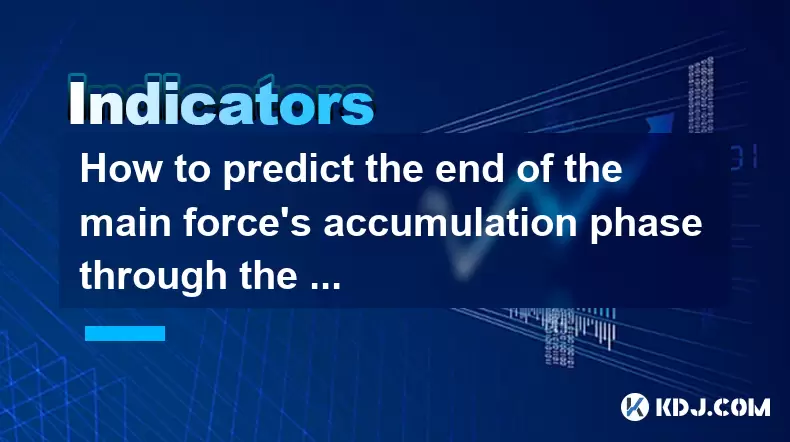
How to predict the end of the main force's accumulation phase through the volume and energy tidal cycle?
Jun 01,2025 at 02:28pm
The accumulation phase in cryptocurrency markets is a crucial period where the main force, often institutional investors or large holders, accumulate a significant amount of the asset before a major price movement. Predicting the end of this phase can be challenging but can be approached by analyzing the volume and energy tidal cycle. Here’s a detailed ...
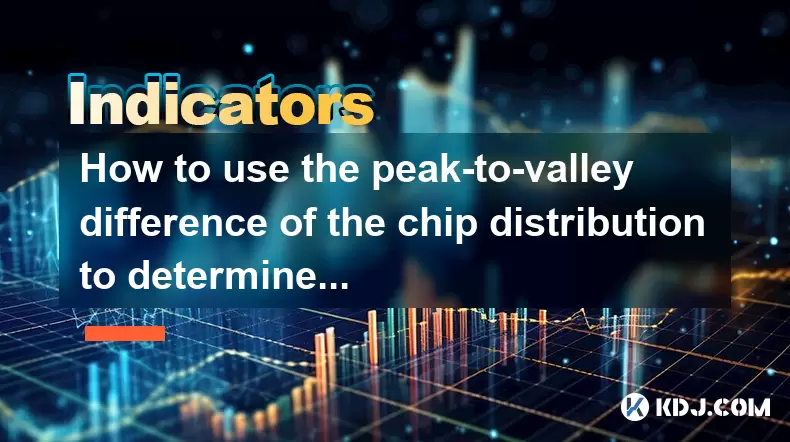
How to use the peak-to-valley difference of the chip distribution to determine the conversion point of the pressure support?
Jun 01,2025 at 06:50am
The concept of using the peak-to-valley difference of the chip distribution to determine the conversion point of the pressure support is an advanced technique in cryptocurrency trading. This method involves analyzing the distribution of chips (or tokens) among different price levels to identify key support and resistance points. By understanding these p...

How to identify the critical point of the reversal of long and short sentiment through the K-line reverse package combination?
Jun 01,2025 at 03:36pm
In the world of cryptocurrency trading, understanding the sentiment of the market is crucial for making informed decisions. One effective method to gauge the potential reversal of long and short sentiment is through the analysis of K-line reverse package combinations. This technique involves studying specific patterns and formations within the K-line ch...

How to use the chip flow index to determine the hidden position building of the main funds?
Jun 01,2025 at 06:57pm
The Chip Flow Index (CFI), often referred to as the Volume Weighted Average Price (VWAP), is a crucial tool used by traders and investors to analyze the behavior of major funds in the cryptocurrency market. Understanding how to use the CFI can provide insights into the hidden position building of these main funds, which is essential for making informed ...

How to combine the golden section and the integer threshold to calculate the psychological target price?
May 31,2025 at 05:07pm
In the world of cryptocurrency trading, understanding and utilizing various technical analysis tools can significantly enhance your trading strategy. One such approach involves combining the golden section (also known as the Fibonacci retracement) with the integer threshold to calculate psychological target prices. This method can help traders identify ...

How to combine the Chaos Theory's pattern structure to predict the opportunity of small-level to large-level?
Jun 01,2025 at 07:56pm
The integration of Chaos Theory's pattern structure into the realm of cryptocurrency trading offers an intriguing approach to predicting market movements from small-level to large-level opportunities. Chaos Theory, traditionally applied in various scientific fields, suggests that within the apparent randomness of chaotic systems, there are underlying pa...

How to predict the end of the main force's accumulation phase through the volume and energy tidal cycle?
Jun 01,2025 at 02:28pm
The accumulation phase in cryptocurrency markets is a crucial period where the main force, often institutional investors or large holders, accumulate a significant amount of the asset before a major price movement. Predicting the end of this phase can be challenging but can be approached by analyzing the volume and energy tidal cycle. Here’s a detailed ...

How to use the peak-to-valley difference of the chip distribution to determine the conversion point of the pressure support?
Jun 01,2025 at 06:50am
The concept of using the peak-to-valley difference of the chip distribution to determine the conversion point of the pressure support is an advanced technique in cryptocurrency trading. This method involves analyzing the distribution of chips (or tokens) among different price levels to identify key support and resistance points. By understanding these p...
See all articles
























































































